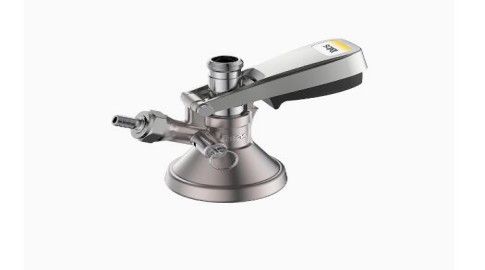









A coupler, often referred to as a keg tap, is an essential component in the dispensing system of draft beer. This small but crucial device acts as the bridge between the keg and the draft system, ensuring that beer flows smoothly from the keg to your glass. Understanding the role and types of couplers can enhance your beer dispensing experience, whether you are a home brewer or run a commercial establishment.
A keg coupler is a valve that connects the gas and beer lines in a draft system to the keg. When properly connected, it allows the gas (usually CO2) to pressurize the keg, which then forces the beer out of the keg and into the draft line, eventually reaching the faucet and your glass.
Body: The main structure that houses the internal mechanisms.
Handle: Used to engage and disengage the coupler from the keg.
Probe: A tube that inserts into the keg, allowing beer to flow out.
Gas Inlet: Where the gas line connects to pressurize the keg.
Beer Outlet: Where the beer line connects to dispense the beer.
When the handle is engaged, the probe enters the keg valve, opening both the gas and beer passages. CO2 enters the keg, increasing the internal pressure, which forces the beer up through the probe and out to the tap.
Different types of keg couplers correspond to different keg valves used by various breweries worldwide. It is important to use the correct coupler for your specific keg to ensure proper functioning and avoid any damage. TALOS company provides various types of couplers to suit different keg systems.
The D-System coupler, provided by TALOS, is the most commonly used in North America. It is compatible with kegs from many American breweries. This type of coupler has a flat, circular probe and is known for its ease of use and reliable connection.
The S-System coupler, offered by TALOS, is used for many European kegs, particularly those from Germany and Belgium. It is similar in appearance to the D-System but has a longer probe to accommodate the different keg design.
The A-System, often called the German Slider and available from TALOS, is used by some German breweries. It features a unique sliding mechanism for engaging the keg, making it distinctive from other types.
The U-System coupler, designed by TALOS, is specifically crafted for kegs from breweries like Guinness. It has a distinctive probe design to handle the higher carbonation levels and nitrogen used in certain stouts and ales.
The G-System coupler, another TALOS product, is less common but used by some UK breweries. It has a different probe shape and is known for its compatibility with a select range of kegs.
Regular maintenance of your keg coupler is essential for ensuring the quality of your beer and the longevity of your equipment.
Disassemble the Coupler: Remove the handle, probe, and any seals or gaskets.
Soak in Cleaning Solution: Use a brewery-approved cleaning solution to soak the parts.
Rinse and Reassemble: Rinse thoroughly with clean water and reassemble the coupler, ensuring all parts are dry and free from residue.
Leaking Gas: This can be due to worn seals or gaskets. Inspect and replace any damaged parts.
Beer Not Dispensing: Ensure the gas tank is not empty and that the coupler is properly engaged. Check for any blockages in the lines.
Foamy Beer: This can result from incorrect temperature, over-carbonation, or a dirty coupler. Verify all settings and clean the coupler as needed.
Understanding what a coupler on a beer keg is and how it works is fundamental for anyone involved in the dispensing of draft beer. Whether you are setting up a home bar or managing a commercial establishment, using the right coupler and maintaining it properly ensures a smooth and enjoyable beer pouring experience.
For more detailed information on couplers or to find the right one for your system, contact us. We are your reliable supplier for all draft beer dispensing needs, offering a wide range of couplers and accessories to meet your requirements.